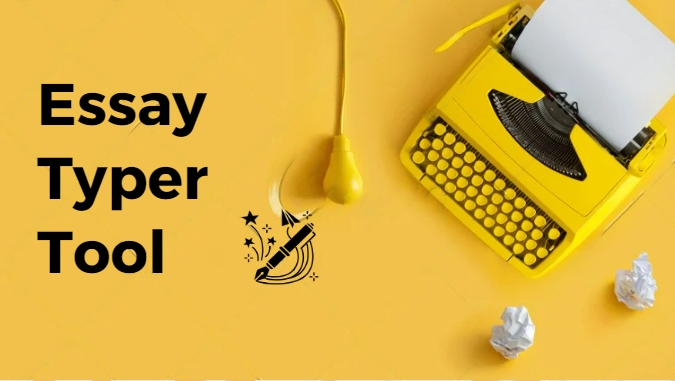Education is becoming more feasible and accessible to everyone thanks to the rapid change in technological trends in education. In the future of education, we will be witnessing increased interaction as well as more efficient utilization of technology. The integration of education technology gives students the opportunity to expand their imaginations and increase their understanding.
The flexibility and comfort provided by educational technology encourage creativity. Because students take their time learning at their speed, this improves the performance of students. There isn’t any obligation to stick to an individual’s schedule for learning retention.
We have compiled an overview of the most recent technologies in the field of education for 2024 that will make learning more adaptable, accessible, enthralling, and enjoyable not just for students but also for instructors.
What is EdTech?
EdTech is a broad term. It is an umbrella term for online education as well as an umbrella term for all tools used to enhance the learning process. The most popular technology trends in education include online learning platforms, learning management systems (LMS) and other software, VR simulators, and other tools for training. Furthermore, edTech includes not only technology for online learning but also offline learning.
Why Is EdTech Popular right now?
EdTech has broadened and diversified the market for online education. Customers now have the option of choosing the format and other requirements for the educational services.
In 2024, people would like to be able to study in a lively setting and take the individuality of their approach. This is why they are fascinated by game mechanics and digital technology. They would prefer education to be a thrilling process. The EdTech segment, which has a variety of methods to boost interest and engagement in subjects, is becoming more integrated into the educational structure.
EdTech helps make learning more enjoyable and individual. Students can review and re-visit lessons at any moment and independently adjust the speed of their learning. Students also receive feedback from their teachers.
Let’s think about which EdTech technologies will become the education technologies in 2024.
Trends to Consider in EdTech Industry
1. Adaptive Learning
Our educational system needs to be revised and simplified. Learning that adapts to the needs of students will be utilized in order to tailor learning experiences according to the specific needs of students. Up until now, learning was thought to take place within the classroom, but now that the educational system is digital, we are seeing more flexible methods of learning developing.
Since learning is a continuous procedure, there is no way that two individuals can ever learn at the same pace as well as in an identical manner. To be able to do better learning, students require a setting that allows them to study to the highest level of their capabilities. Students can pick classes based on their preferences and interests, track their progress, and concentrate on their weaknesses with personalized learning, a highly effective educational approach.
2. Virtual Reality and Augmented Reality
As per the Market Research Future (MRFR) study, demand for AR, as well as VR for the field of education, is projected to grow by a CAGR of 18.2 percent 2022 between 2022 and 2027. The educational industry is constantly evolving and changing its standard teaching techniques. The way teachers teach and the way students learn can be completely altered by the use of Virtual or Augmented Reality in the education sector.
AR and VR can help improve STEM-related classes and medical simulations, as well as humanities and arts content and even technical education. Another factor is that Virtual Reality and Augmented Reality technologies are at the point of becoming among the most exciting developments in the field of “EdTech” because of their ability to share content online in new and exciting ways.
3. Gamification
Gamification is a method that enhances learning by using game design concepts. It has become increasingly more popular in recent times, and by 2024, it’s predicted to continue growing as the trend. Gamification is a great way to improve retention and keep students interested. It encourages students to take an active part in their learning by creating goals, earning rewards, and competing with them or other students. Games can be created to promote teamwork and collaboration and help students develop crucial interpersonal and social skills.
4. Nano Learning
The Nano-learning technique is often called bite-sized learning. Simply put, it shatters complicated topics into smaller chunks to facilitate understanding. It is a concentrated learning style that lets students learn through smaller amounts of information over a shorter time.
Nano-learning programs are not printed on paper and typically only serve only one learning goal. It’s really about continuous learning in which 2-10 minute sessions of learning consist of interactive tutorials that focus on the transfer of knowledge as quickly as possible so that the learner is able to comprehend and grasp it quickly. In the end, when it comes to solving complex issues, there are better substitutes for more comprehensive approaches than Nano-learning.
5. Custom E-Learning Development
Web-based chat tools allow the online delivery of classes that assist students with difficulties talking to one another and instructors. For example, XB Chat is compatible with Chrome, Mozilla, and Safari browsers. Users can make audio and video calls, as well as create chats using text. The technology of the future for EdTech is promising. However, it will be contingent on the ability of the education industry to adapt to changes and adapt solutions to many fields rapidly.
Conclusion
The advent of digitization and the other trends mentioned above are expected to mean that the EdTech sector will grow and change over the coming years. These trends will certainly affect how we think about the classroom as schools begin to adopt the latest technology and methods to provide top-quality education.




